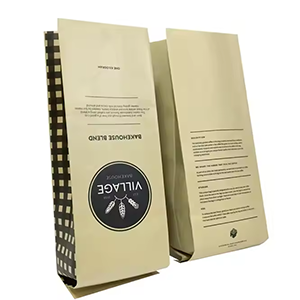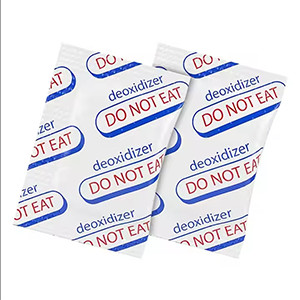Introduction
In the context of the Sino-US trade war, China has significantly reduced its imports of US wheat and turned to alternative markets such as the EU and Argentina. Russia is still one of the world’s largest flour exporters, and Argentina, Brazil, and Australia are increasing their wheat export shares. The global wheat product market is undergoing structural changes, and countries are seeking more stable sources of imports to reduce risks. If you own a wheat factory, you must seize this opportunity! Wheat products are easily affected by moisture, oxidation or deterioration, which affects the taste and quality. Therefore, the packaging of wheat products is also a key issue. Want to know how everyone solves the problem of long-distance transportation and ensures product quality? You can take a look at how these successful manufacturers do it.
Moisture-proof and fresh-keeping
Wheat products are susceptible to moisture, oxidation or deterioration, affecting taste and quality.
Flour: It has strong hygroscopicity and is easy to clump and mold after being damp. Using multi-layer composite film (aluminum foil, PE/PP plastic) or vacuum packaging can effectively block moisture and oxygen.
Noodles/pasta: Wet noodles need to be refrigerated or packaged in a modified atmosphere (MAP), while dry noodles need moisture-proof packaging (such as aluminized bags).
Cereal breakfast: Usually packed with nitrogen to reduce oxidation and prolong crispness.
Russian flour exporters use moisture-proof kraft paper bags + lining PE film to ensure that they will not deteriorate during long-distance transportation.

Packing method: Use a horizontal multi-station pre-made bag packaging machine with a powder head to automatically fill the flour into kraft paper bags and seal them. The machine has beautiful sealing and good sealing, which is suitable for different production capacity requirements.
Pest and pollution prevention
Wheat products are susceptible to pests (such as weevils, moths) and microbial contamination.
Physical protection: thickened packaging, heat sealing, insect-proof coating (such as diatomaceous earth).
Chemical protection: some countries allow the use of food-grade inert gas (such as CO₂) or low-dose insect repellent (such as natural citronella essential oil).
UV blocking: transparent packaging needs to add a UV blocking layer to prevent oil oxidation (such as whole wheat flour).
Industry case:
Indian flour brand “Aashirvaad” uses double-layer insect-proof packaging to reduce storage losses.

Packing method: Use a vertical packaging machine with a powder head to automatically make a double-sided sealed packaging bag, automatically fill the flour into the thickened packaging bag, and seal it. It should be noted that this requires confirmation whether the packaging machine you purchased is compatible with the thickened packaging film.
Organic flour brands (such as Bob’s Red Mill) use fully sealed metal cans to avoid pests.

Packaging method: Use a linear filling machine with a powder head to fill a certain amount of cereal into a metal can, and then seal it with a can sealing machine. This packaging method is more expensive, but it can be better sealed and preserved and reused, and is more popular with consumers.
Extending shelf life
The shelf life of different wheat products varies greatly, and packaging technology can significantly extend the shelf life:
| Product | Regular Packaging Shelf Life | Optimized Packaging Shelf Life |
| All-Purpose Flour | 6-12 months | 18-24 months (vacuum/nitrogen-packed) |
| Dried Pasta | 2 years | 3+ years (moisture-proof aluminum foil) |
| Whole Wheat Flour | 3-6 months | 12 months (refrigerated packaging) |
| Breakfast Cereal | 6-8 months | 12 months (nitrogen-packed) |
Industry trends:
Active packaging: built-in oxygen absorbers or humidity regulators (such as Ageless® from Mitsubishi Chemical).

Degradable packaging: The EU promotes PLA (polylactic acid) biofilm to replace plastics, such as the British brand “Doves Farm” using corn starch-based packaging.
Brand display and consumer experience
Packaging is the key to brand differentiation. Add these packaging contents appropriately to make your consumers feel more confident to buy! :
High-end market: Matte material, hot stamping, transparent window, build your brand and attack the high-end market.
Environmental trend: Add environmental protection logos such as recyclable paper box logo and plastic-free logo on the packaging bag to reflect corporate responsibility and environmental awareness.

Convenience:
Zipper closure (convenient for reuse).
Estimated small packaging (such as 1kg flour is divided into 4 small bags to reduce waste).

Successful cases:
Barilla: iconic blue packaging + Italian flag elements to strengthen brand awareness.

King Arthur Flour: retro design + transparent window to highlight the quality of flour.
Conclusion
Packaging is not only related to the storage safety and quality maintenance of wheat products, but also the embodiment of brand value, market competitiveness and environmental responsibility. In the future, as consumers’ requirements for food safety, convenience and sustainability increase, innovative packaging technology will become a key growth point in the industry. Are you still undecided about your product packaging design? Contact EasternPack to develop the most perfect packaging solution and machine for you!
